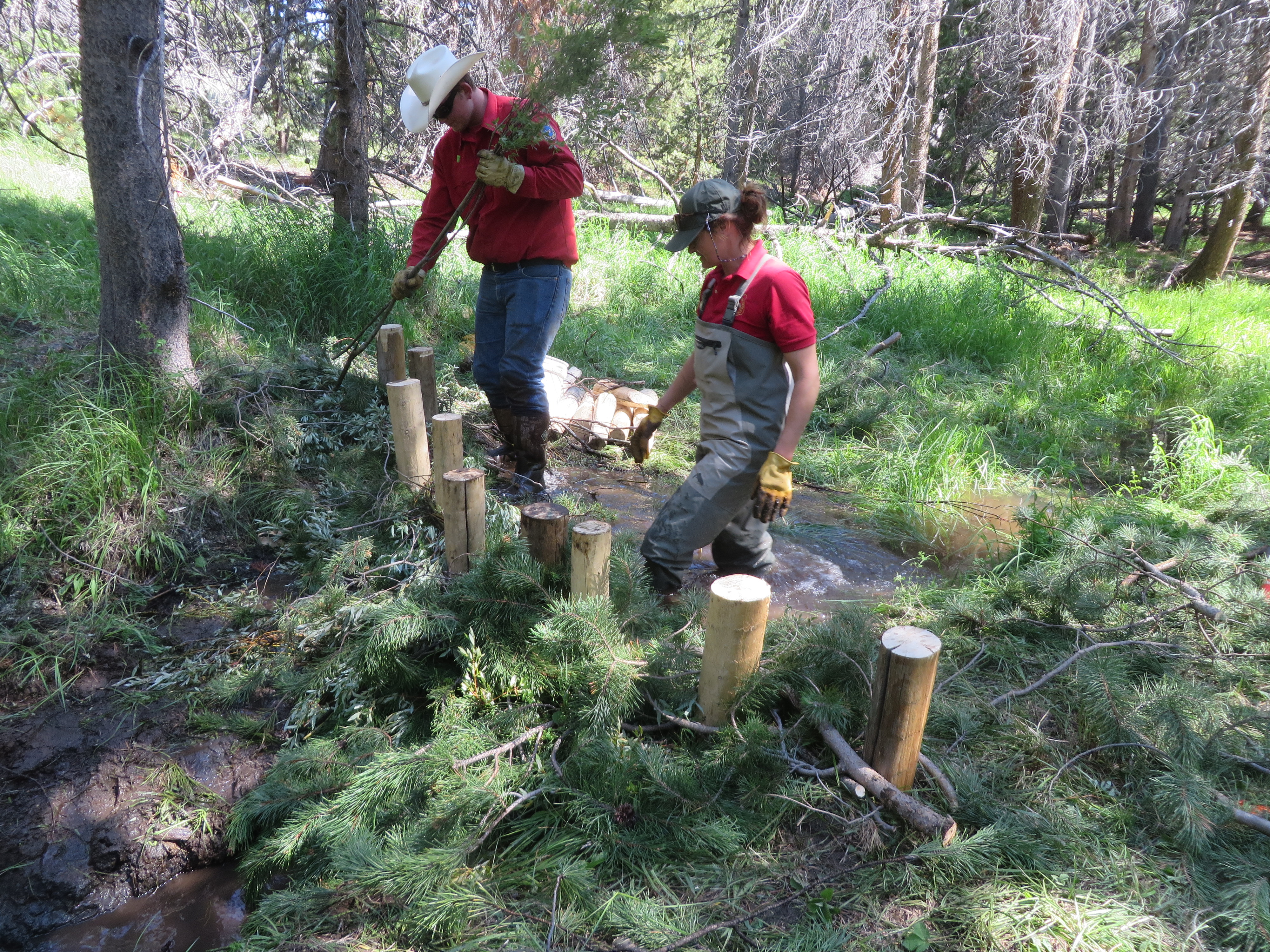Success shown by trail camera footage on the Mill Creek Habitat Improvement Project
Success shown by trail camera footage on the Mill Creek Habitat Improvement Project
Amy Anderson 307-335-2604
November 19, 2020

Lander - Trail cameras placed in the Mill Creek drainage after the construction of a series of ten man-made beaver dams show a large diversity of wildlife utilizing the newly ponded water source. Moose, elk, mule deer, red-tailed hawk, red fox, pronghorn, black bear, chipmunks and squirrels have all been caught on camera there in the last few months.
These man-made beaver dams, or beaver dam analogs (BDAs), were constructed in partnership by personnel from the Wyoming Game and Fish Department’s Lander Region and the U.S.F.S. Shoshone National Forest. Mill Creek is one of the drainages in the South Pass area where targeted strategies are in place to improve wildlife habitat and forest health. Two strategies being employed are the construction of BDA’s, and the removal of encroached conifer from aspen stands.
In the Mill Creek drainage, both strategies are in place to improve the water holding capacity of the riparian area, invigorate willow and aspen communities, and maintain water in the stream later into the season to benefit wildlife. This drainage was chosen as there is evidence of previous occupancy by beavers, including old dams and chewed tree stumps.
Beavers provide amazing benefits to these small headwater streams simply by spreading water out across the drainage allowing deciduous trees and healthy understory vegetation to flourish. After the beavers move on, the resilience of the riparian area decreases over time, conifers encroach into the drainage bottom which causes aspen and willow to decline and soils to dry out. Constructing BDA’s, reducing conifer canopy cover, and improving riparian vegetation, will hopefully entice beavers back to continue the work and maintenance in the area, as well as improving forage for wildlife.
Game and Fish Habitat Biologist Amy Anderson says “It is encouraging to see the diversity of wildlife already using this pooling water. We so appreciate the continued partnership with the Shoshone National Forest in pursuing habitat improvements across South Pass, and hope to expand the use of BDA’s across the Lander Region due to the relative ease of installation, inexpensive materials, and visible benefits achieved in a short period of time.”
Thank you to Shoshone National Forest Wildlife Biologist Joe Flower for sharing all the great photos. For more information on the project please contact Amy Anderson at 307-335-2604.
- WGFD -
Legal Disclaimer:
EIN Presswire provides this news content "as is" without warranty of any kind. We do not accept any responsibility or liability for the accuracy, content, images, videos, licenses, completeness, legality, or reliability of the information contained in this article. If you have any complaints or copyright issues related to this article, kindly contact the author above.
